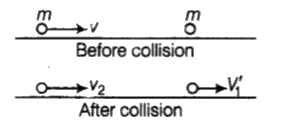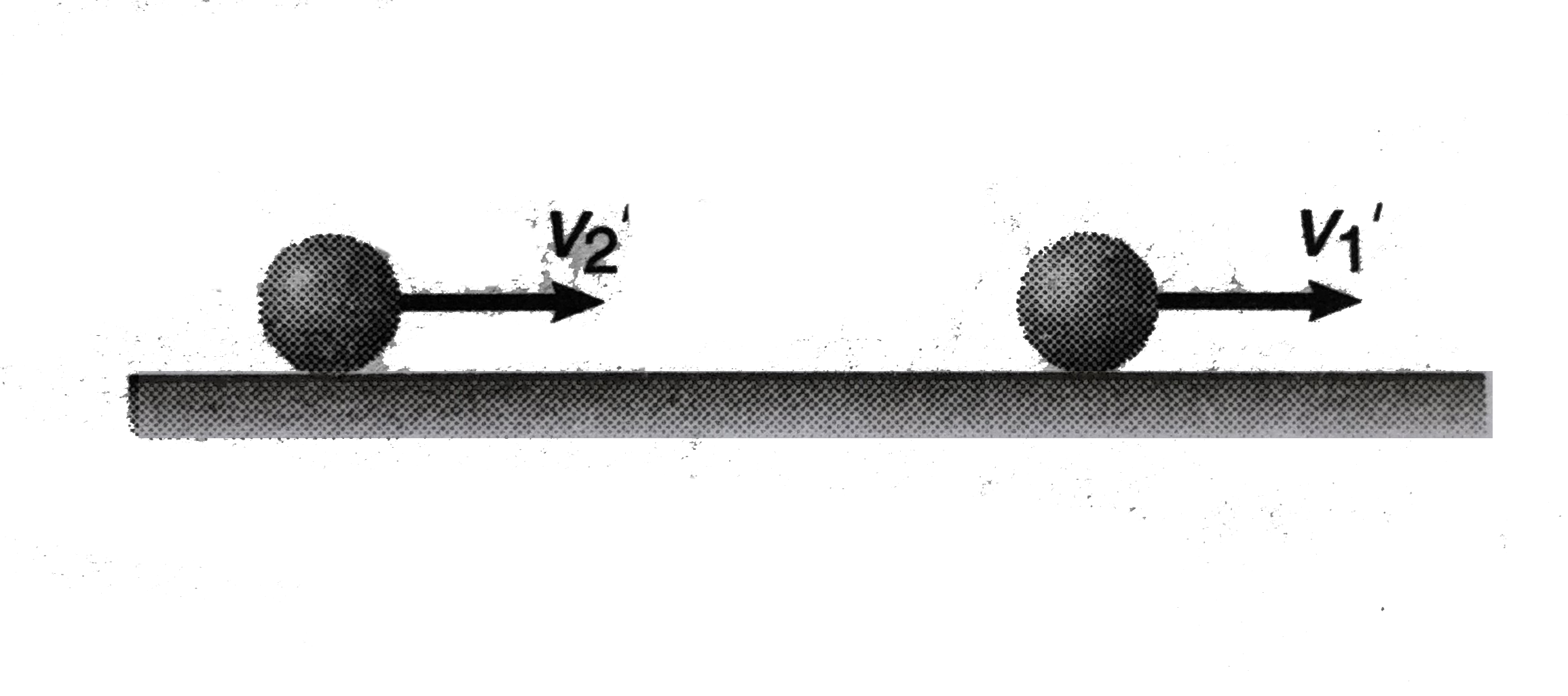A ball of mass m moving at a speed y makes a head on collision with an identical ball at rest. The kinetic energy of the balls after the collision is 3/4th of the original. Find the co-efficient of restitution

v1.=(1+e2)vandv2.=(1−e2)vandKf=34Ki(or)12mv21+12mv.22=34⎛⎜⎝12mv2
Substituting the values of v1.v2. we get (1+e2)2+1−e(2)2=34
or (1+e)2+(1−e)2=3or2+2e2=3(or)e2=12⇒e=1√2
Topper's Solved these Questions
- BOOK - AAKASH SERIESCHAPTER - COLLISIONS EXERCISE - VERY SHORT ANSWER TYPE QUESTIONS12videos
COLLISIONS
- BOOK - AAKASH SERIESCHAPTER - COLLISIONS EXERCISE - NUMERICAL EXERCISE ( LEVEL 1)18videos
COLLISIONS
- BOOK - AAKASH SERIESCHAPTER - CENTRE OF MASSEXERCISE - ADDITIONAL PRACTICE EXERCISE (PRACTICE SHEET (ADVANCED))3videos
CENTRE OF MASS
- BOOK - AAKASH SERIESCHAPTER - ELASTICITYEXERCISE - Questions for Descriptive Answers10videos
ELASTICITY
Similar Questions
On a frictionless surface, a ball of mass m moving at a speed v makes a head on collision with an identical ball at rest. The kinetic energy of the balls after the collision is 3/4th of the original. Find the coefficient of restitution.
View SolutionA ball of mass m moving at speed v makes a head on collision with an identical ball at rest. The kinetic energy of the balls after the collision is 3/4th of the original. Find the coefficient of restitution.
View Solution
Knowledge Check
- Question 1 - Select One
Choose the most appropriate option.
A ball of mass m moving at a speed v makes a head on collision with an identical ball at rest. The kinetic energy at the balls after the collision is 3/4th of the original. What is the coefficient of restitution?
 A1/√3B1/√2C√2D√3
A1/√3B1/√2C√2D√3 - Question 2 - Select One
A ball of mass m moving with a speed v makes a head on collision with an identical ball at rest. The kinetic energy after collision of the balls is three fourth of the original kinetic energy. The coefficient of restitution is
A12B13C1√2D1√3
A ball of mass m moving at a speed v makes a head on inelastic collision with an identical ball at rest. The kinetic energy of the balls after the collision is 34th of the original. Find the coefficient of restitution.

 View Solution
View SolutionA ball of mass m moving at a speed v makes a head on inelastic collision with an identical ball at rest. The kinetic energy of the balls after the collision is 34th of the original. Find the coefficient of restitution.

 View Solution
View SolutionA ball of mass m moving at a speed v makes a head-on collision with an identical ball at rest. The kinetic energy of the balls after the collision is three fourths of the original. Find the coefficient of restitution.
View SolutionA ball of mas m moving t a speed v makes a head on collisiobn with a identicalbl at rest. The kinetic energy of the blls after the collision is three fourths of the original. Find the coefficient of retitutioin.
View SolutionA ball X of mass 1 kg travellingg at 2 m/s has a head-on collision with an identical ball Y at rest. X stops and Y moves off. Calculate the velocity of Y after the collision.
View SolutionA ball of mass m moving with velocity u strikes another identical ball at rest. Find the velocities of the balls after the collision if the coefficient of restitution is e and the collision is head -on. Also , calculate the loss in K.E.
View Solution

